Google Quietly Testing Perplexity/ChatGPT-like In-line Shopping Experience in AI Mode - Agentic 'Buy for me' Imminent?
Google's AI surfaces are currently a bit of confusing hodgepodge. In this post we unwind it all for you and show you where we found new evidence they are iterating on Agentic on 'AI Mode'.
Our eagle eyed agents at ReFiBuy noticed something new going on at Google this week - for detailed commercial product prompts (shopping prompts) they were increasingly showing what we call a ‘Product Card’ experience with detailed pop-up.
Is this the groundwork for the Level 3 Agentic capabilities they announced at Google I/O?
Before we dig in, here’s a quick review of all the complex and confusing places.
Navigating the Confusing Labyrinth of Google AI Options
There’s four different Google AI expereinces that are distinct and in very different locations. For this conversation and to understand how we predict they will end-up, here’s a quick guide to each of them as we’ve heard frommany readers and brand/retailers I’ve talked to that it’s quite confusing.
1. AI Overviews (AIOs)
Access point: www.google.com - When you go to traditional google and type in a query, these are the GenAI answers (using Gemini under the hood) that you get at the top of the ‘trad 10 blue links’.
These don’t show up frequently for shopping-related search terms (I think it’s because they don’t want to cannibalize one of the highest monetized commercial term categories, but they would say it’s not as relevant). If you go super super top of the funnel, where the auction isn’t as vibrant, you can get them to show up like this:
For the most part, we’re not watching AIO’s for shopping, more on why in the ‘What’s the Google GenAI End Game?’ section.
Notice the last thing in the AIO, it pushes the user to AI Mode…
2. AI Mode
Think of AI Mode as ‘Google reimagined from the ground up to be AI Native’. Instead of searches, we’re now, like ChatGPT, prompting and in fact the first thing you see is Google encouraging you to: “Ask detailed questions for better responses”. There are several gateways into AI Mode. The primary one is you go to traditional google.com and click on the AI Mode button at the right of the search bar:
Then you are transported into a future where Google has fully embraced AI (and a lot of shimmering purple colors):
Note: These are real-world recommendations that I think are pretty funny - Cheeky AI Mode is throwing both ChatGPT and Perplexity under the bus
AI Mode is basically a clone of Perplexity, it has the exact same ‘recommended next prompt’ feature that Perplexity innovated and now is common in all the web search models
You can learn more about AI Lab here.
Note: For some companies Gemini is probably turned off by default (GSuite/Google Workplaces), so you’ll have to try it out on a personal account.
3. Gemini
Gemini, accessible via gemini.google.com is where you can strip down google to the underlying LLM and interact directly with the model without any bells or whistles.
4. Google Shopping
In trad Google, when you enter a query that Google knows is a product, it will interweave and sometimes totally move you over to the GS experience. This is what we call in the industry a traditional Comparison Shopping Engine (CSE) experience. At the ‘research’ level of shopping you get a product card experience with filtered navigation on the top and bottom panes and when you click on it you get a right pane ‘offers’ pop up.
At the ‘Find’ level, it features an ‘offer grid’ experience and has filtered navigation on the top and left navigation.
I list some Google Shopping here, because Google is sprinkling ‘back into’ Google Shopping many of the new features like the new GenAI ‘try it on’ feature which currently pops up for any apparel item.
What’s the Google GenAI End Game With These Four Experiences?
Reading the tea leaves, it feels like AI mode is ‘Google 2.0’ - they know they need to end up with a much better, much more competitive to ChatGPT experience. The problem is it can’t possible monetize as well as Google 1.0. This is the innovator’s dilemma. They know to beat ChatGPT they need to move to Google 2.0, but that would be fiscally irresponsible.
They are going to try to walk the fence by sending some traffic, or have it self-select to Google 2.0 (AI Mode) and work on the monetization and slowly turn the dial from 1.0→2.0 and minimize the loss in revenue.
You can hear the argument in a meeting - if people leave trad Google, we want them to NOT leave for ChatGPT, we want them to go to AI Mode, so at least they stay in our family and we make ‘something’ vs. ‘zero’.
The risk with this strategy is they have a competitor that is growing very very fast and focused 100% on one thing, where Google is now spending half their effort on core google and half on Google 2.0.
We’ll see if this works. The point for the purposes of this post is we believe AI Mode is the future of Google, so we’ve been watching it closely and why this change could be a harbinger for things to come at the intersection of Google
Google AI Mode’s New Product Experience
As a reminder, at Google I/O, they announced their Agentic offering and said it was coming: “in the coming months” - which, technically, could mean years too ;-). This Retailgentic post had deep details of that here if you want to refresh your memory of what that looked like.
In a July 24 Google blog post, here, where they announced the ‘Try-On’ feature’s availability, they didn’t address when the agentic ‘buy for me’ feature will be out, but said: the other features will be out “Starting this fall in the U.S. in AI Mode.”
This week we noticed that may product prompts in AI Mode were starting to generate in-line product cards like this:
Here the two product cards at at the bottom.
When you click on the product cards, you get a right-frame pop-up with the offers for the product card like this:
If you scroll back up to the section that talks about Google Shopping, this should look familiar as it is the exact same pop-up that you see in Google Shopping. Another addition I’m 90% sure is new - the three action dots (both in this AI Mode and GS) pops up this modal box:
For select retailers (Target for example), you’ll see a ‘Buy now’ button. Don’t get too excited, currently that doesn’t send an agent to buy this for you at Target, but it does do, what we call in the biz, direct cart injection and throws that item into the cart for you and moves you straight to the checkout page.
Are we a Step Closer to Google’s ‘Buy for me’ Agentic Checkout?
Reading some more tea leaves here, if you were building this out step by step, what you would do is:
Fire a product card - Add product cards to AI Mode that trigger when the user’s prompt is getting into an online shopping funnel ✅
Wire in GShopping Offers Pop-up - If the user clicks on the product card, show them a detailed pop-up of products offered for that SKU ✅
Cart injection - If they hit ‘Buy now/Buy for me’ - Inject the SKU into the cart. ✅
Payment collection and bill-to/shop-to selection (if needed) - Usual steps here if not in memory. (This step is not done yet ❌)
Cart validation - Next you’ll want to get to the checkout page to validate all the tricky ecommerce-stuff that can hang you up at the moment of truth: is the price right, is it in stock, is tax right is the shipping right, is bill-to right, did we get the user’s loyalty card in there correctly? If yes, validated! (This step is not done yet ❌)
Complete checkout for user - If all of this passes the evaluation phase, then the agent will click the ‘complete order button’. (This step is not done yet ❌)
Grab post-transaction info and show/send user - After checkout, there is frequently a confirmation number, and then (if like what Amazon does), a shipping email will generated that Google may ‘man in the middle’ and send that to the user as well - typical ‘post-transaction stuff’ (This step is not done yet ❌)
Because of this, I come to the conclusion that we’re getting close and I think by the end of September we’ll see this start to pop-up in AI Mode tied to this new product card experience.
Stay tuned, we’re watching this closely.




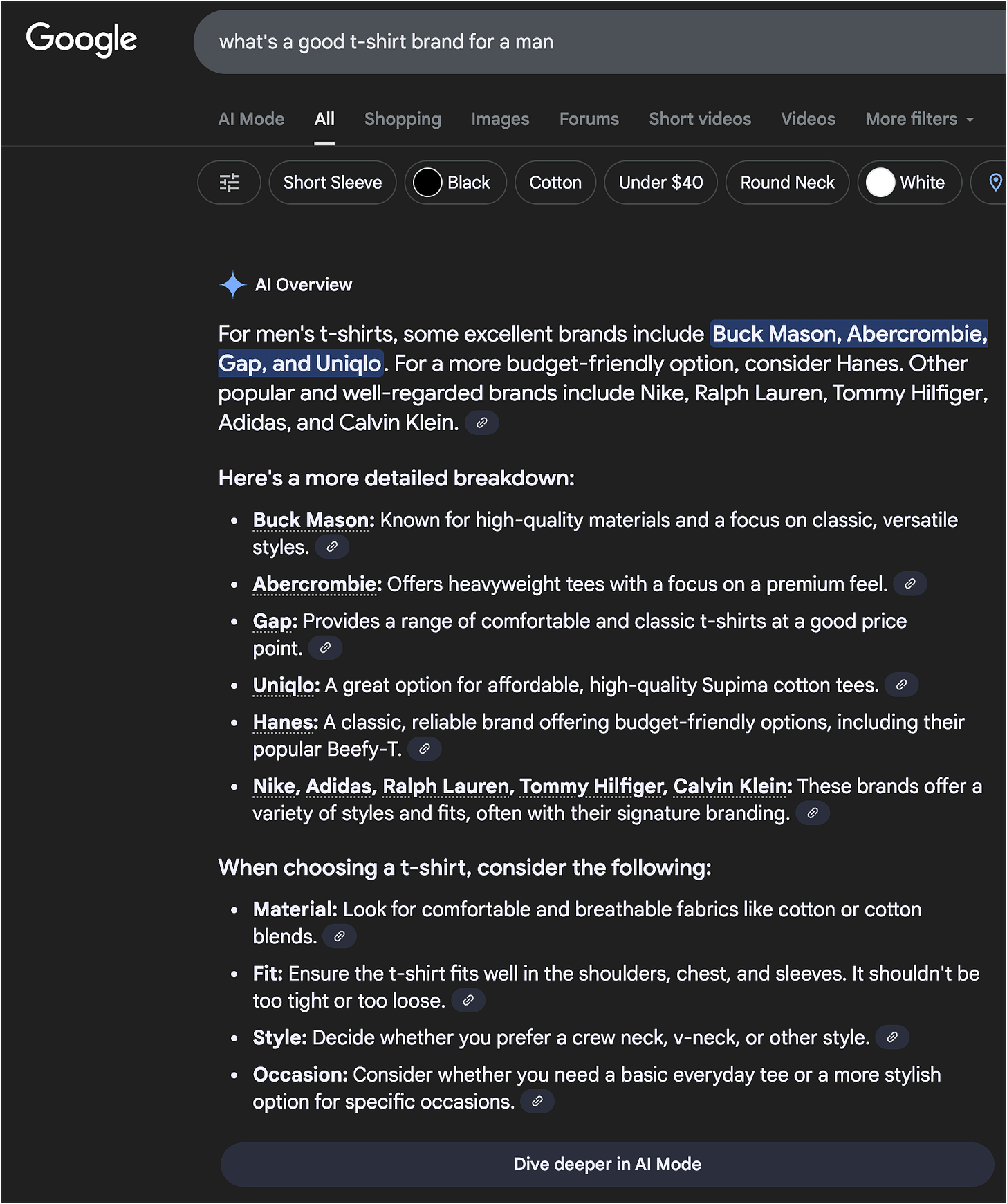
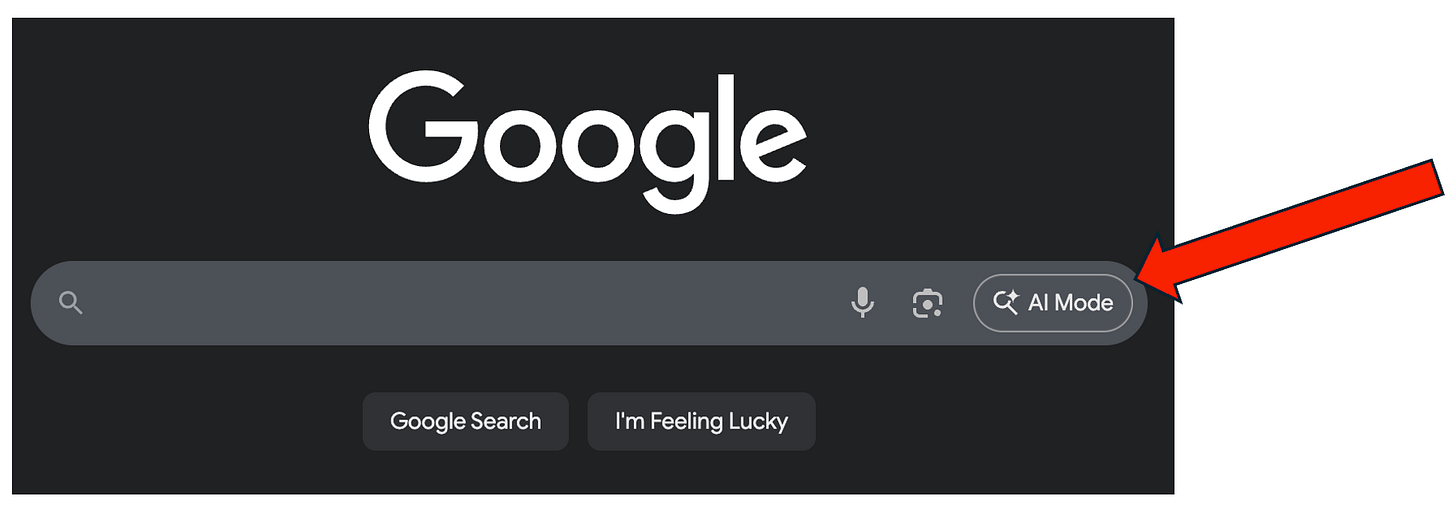
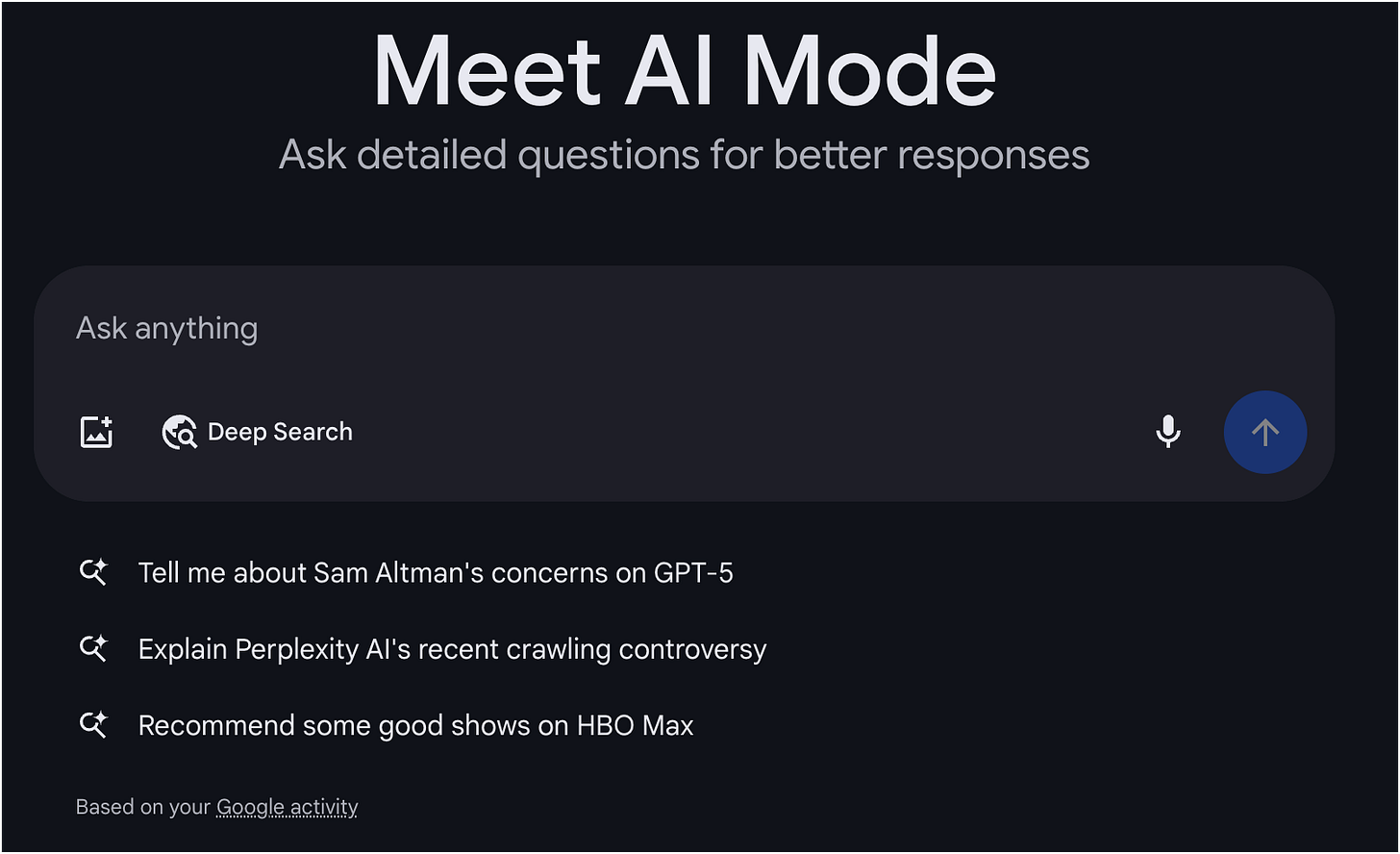

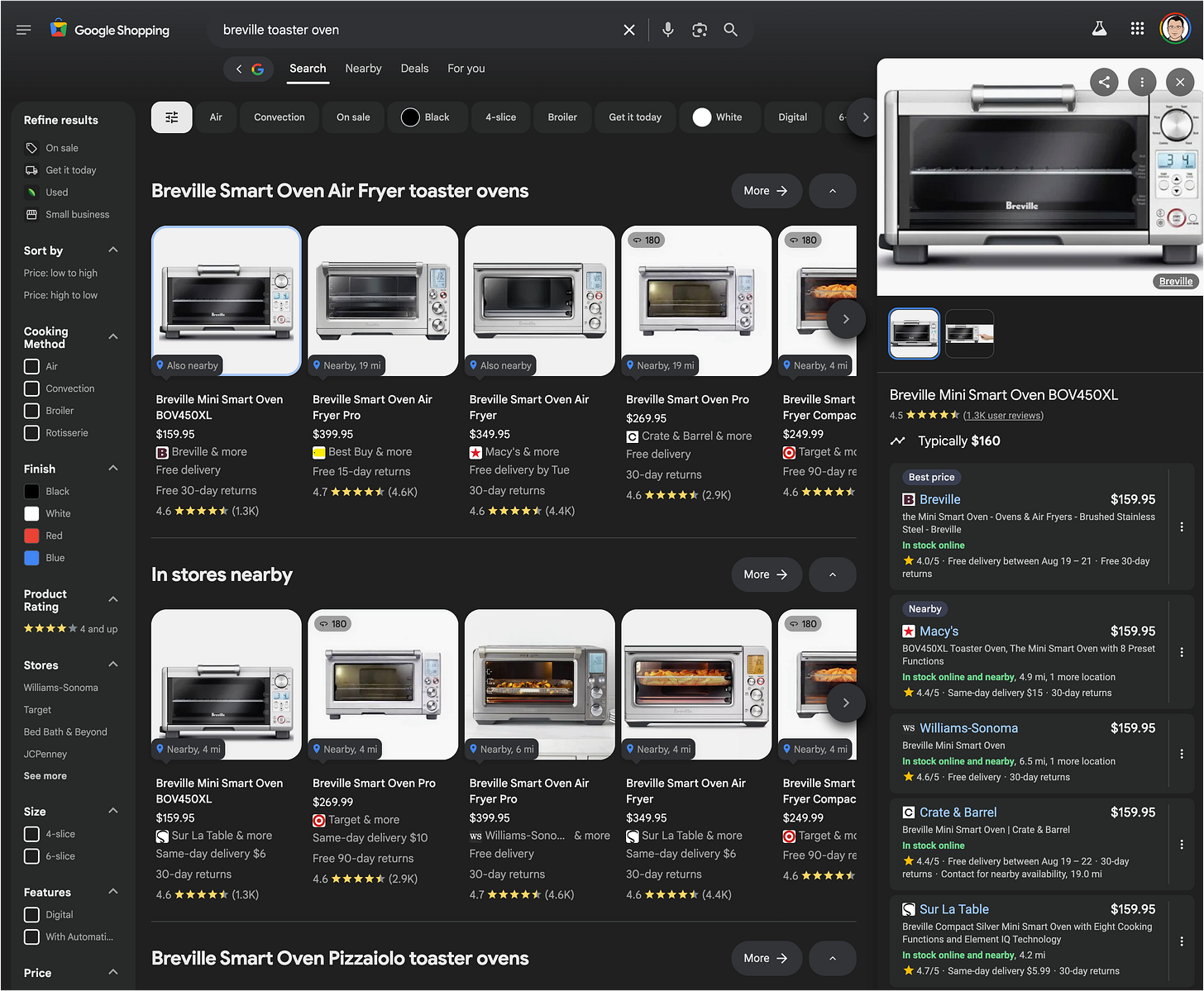
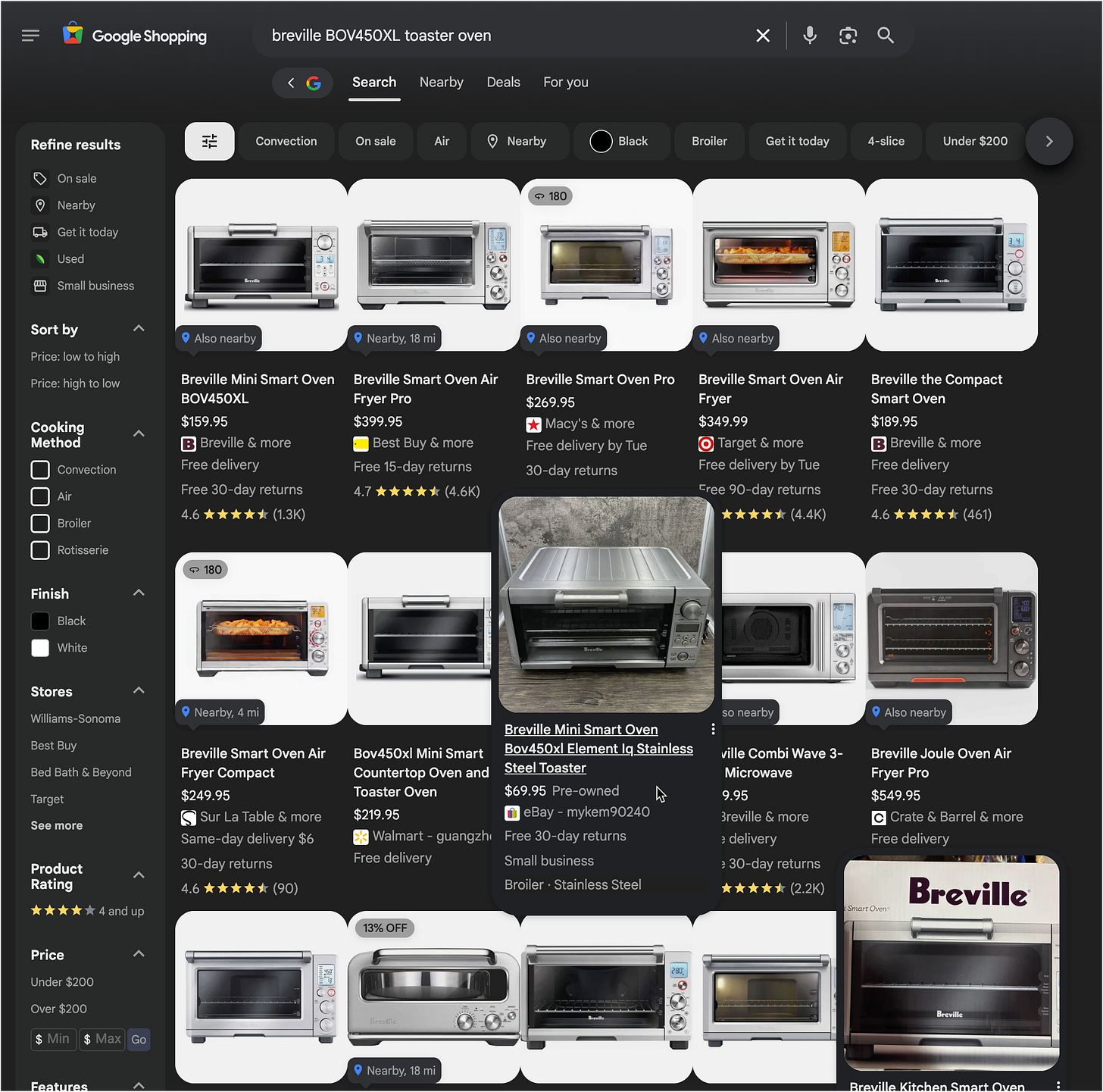


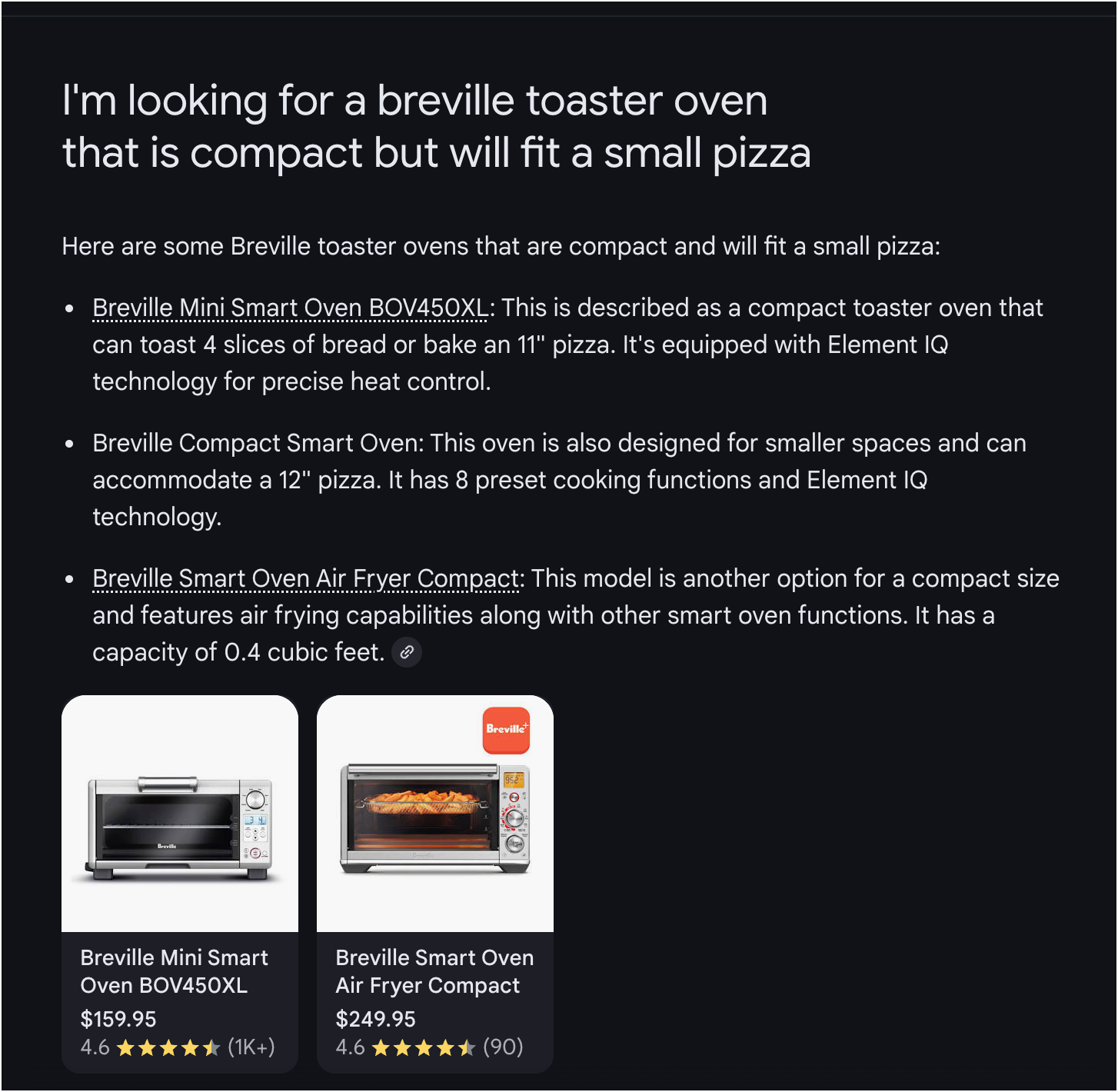
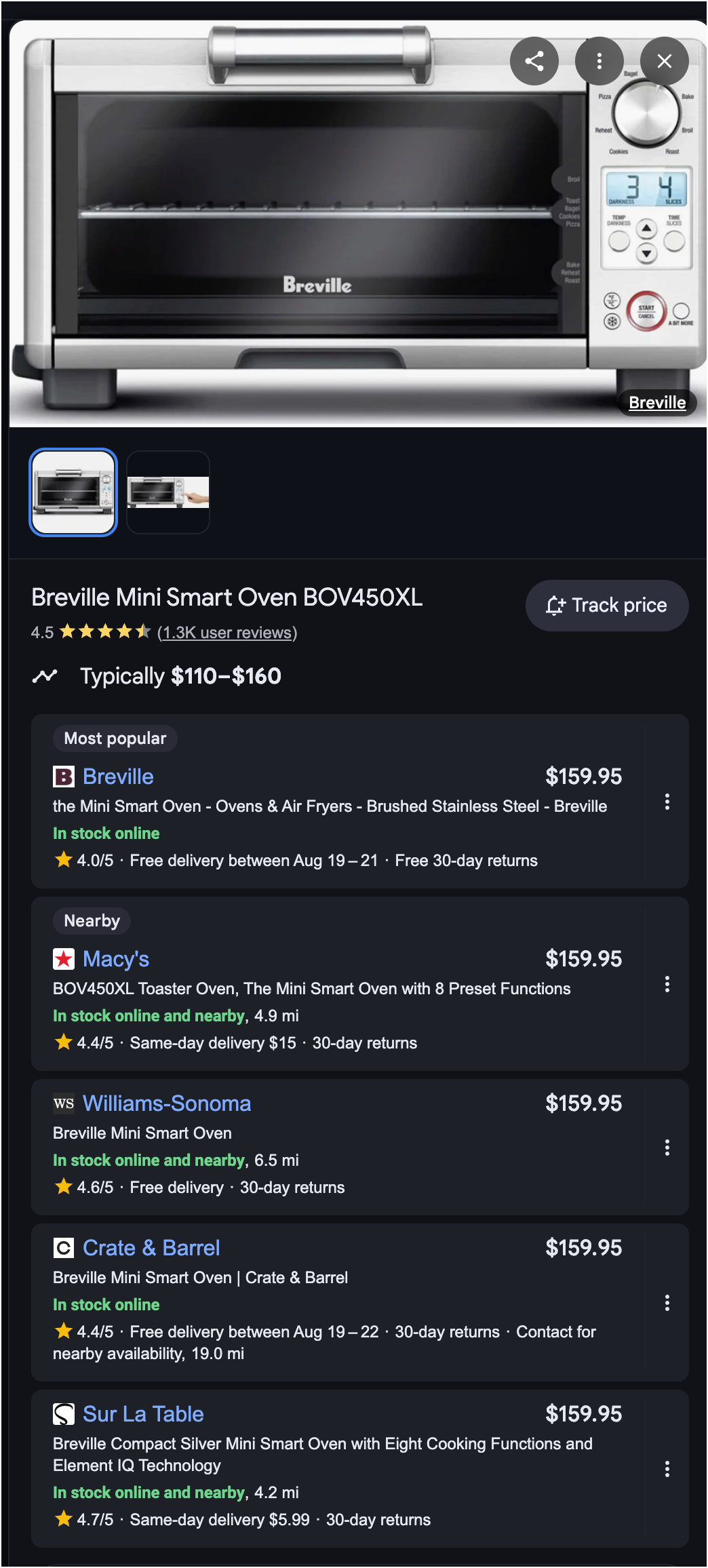
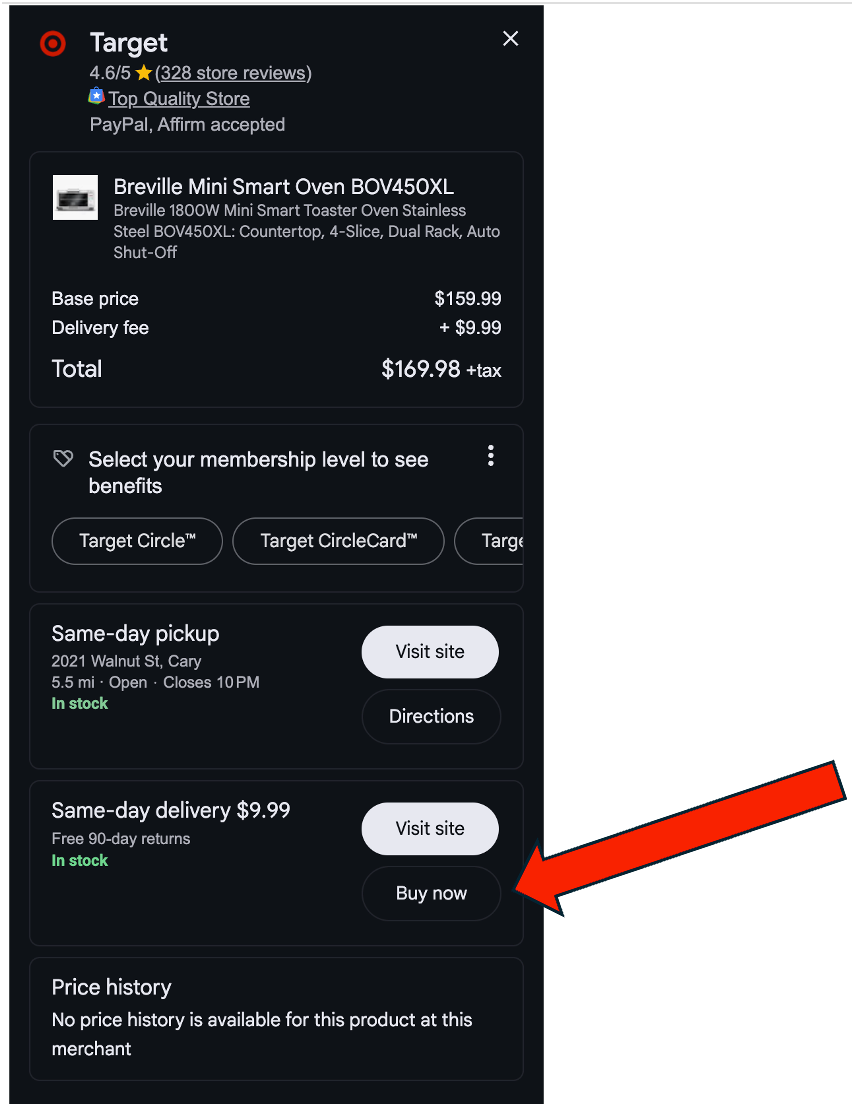
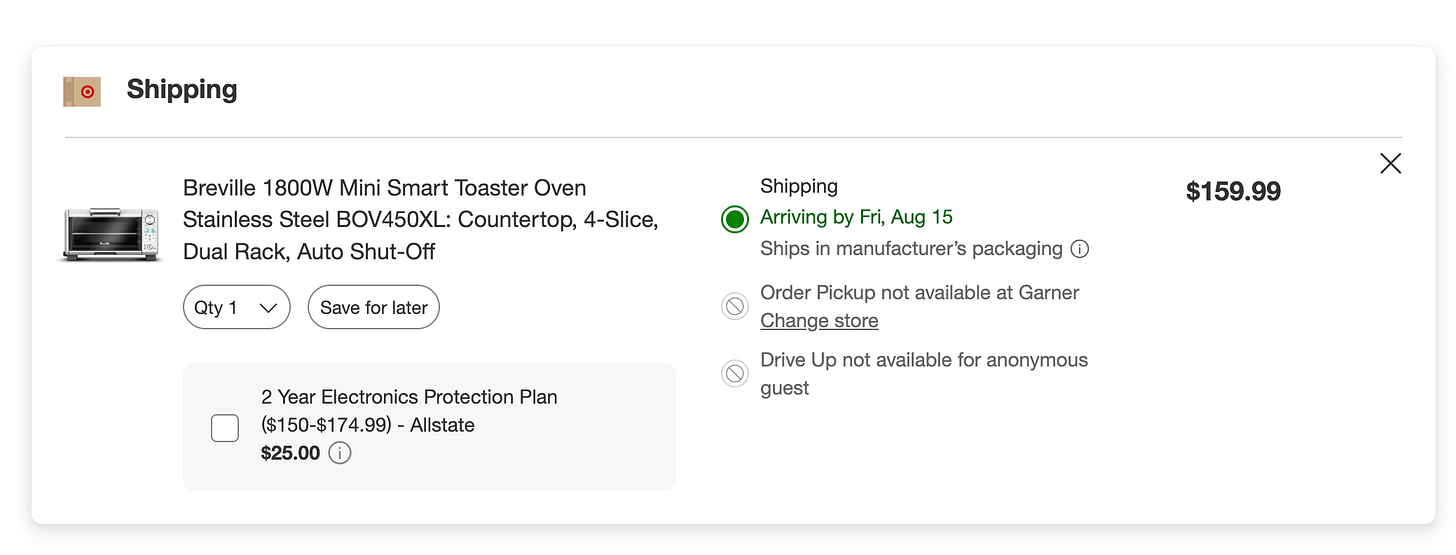


This is a great breakdown of where agentic commerce is headed at least in Google’s eyes.